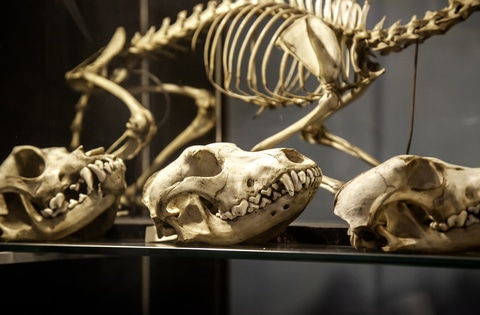Everything, Uncategorized
Artists Killing Animals For ‘Art’
Some artists have taken to killing animals in the name of what they call art. In May of 2003, an art student at the Victorian College of the Arts in Australia killed a live chicken as part of a performance piece done in front of his class.
Other students in the class were not impressed, and complained about the student’s actions to the RSPCA. At the time, Sue Baker, head of the arts department, stated, “We’ve come down hard on this student and said, ‘You don’t do this for art, you do it for food, and it is offensive for anything to do with cruelty to animals to be portrayed as art.'”
Unfortunately, however, gallery owners do not seem to share that point of view.
One gallery owner in Sweden said recently that in spite of protests against the actions of an artist currently exhibiting at his gallery, who likes to kill animals and call it art, “She’s going to continue to make her art. Is it better to kill animals for makeup than for creating art? These people forget that art is food for the soul.”
The gallery owner claimed the artist’s work involving the killing of animals was “very important” and added, “I have tried to get her to try to work with larger animals, like dogs.”
The galleries that exhibit the work of animal-killing artists believe that the images created using the dead animals arouse thoughts and questions that the viewers might not otherwise have had, and, therefore, these works are art.
They attempt to justify the killing of animals strictly for art by saying that the pictures reflect the shallowness and double standards held by a society which objects to animals being killed to create pictures, but not to the killing of animals for food or clothing.
An artist who recently had an open exhibit featuring animals she had killed was reported to public prosecutors by the local veterinary association for failing to have a veterinarian present when the animals were killed.
A spokesman for the veterinary association said the artist violated laws regulating the use of animals for public viewing which require that when animals are killed for the purpose of public entertainment a veterinarian has to be present to ensure the animal does not suffer. According to some, shock artists of this sort are really just trying to attract attention and build their names, and like most children who seek attention, the more attention they receive the more likely they are to repeat the action which brought them the attention in the first place.
As one animal welfare advocate noted, if killing animals brings publicity to one artist, others might be tempted to try to garner publicity by doing the same.
Some artists who have used dead animals in their work claim that doing so shows that life and death are not opposed, but linked. Others have said that they do no more than what normally takes place in a slaughterhouse, using animals which would have ended up there anyway.
Still others have claimed they are guaranteed the freedom of artistic expression by law and that this supersedes any rights that the animals they kill may have.
Actress Brigitte Bardot, who has protested exhibits featuring the slaughter of animals, said, “I have never heard of a performance where people pay to rejoice in the suffering of animals.”
Animal advocates have been contacting the ministry of Sweden to voice their protests.
By Sherry Morse – © 2003 Animal News Center, Inc.


